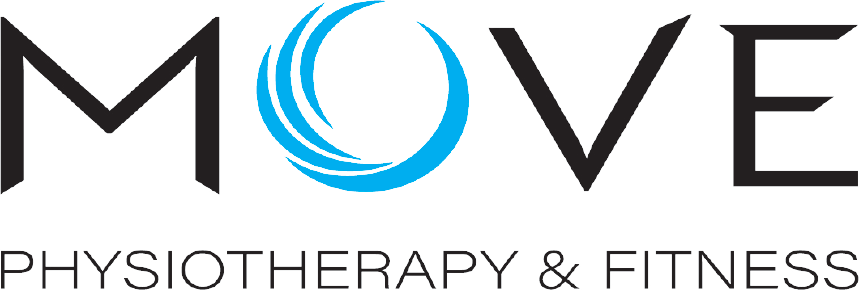How Move Physiotherapy Can Treat Your Shoulder Bursitis
Shoulder bursitis is a common cause of shoulder pain, often making it difficult to lift your arm, reach overhead, or even sleep comfortably. It occurs when a small fluid-filled sac in your shoulder, called the bursa, becomes irritated and inflamed. Normally, this bursa cushions and protects your tendons and muscles, but when it gets swollen, it can lead to pain, stiffness, and weakness in the shoulder.
At Move Physiotherapy, we don’t just focus on short-term pain relief—we find and fix the root cause to stop the problem from coming back. Our expert physiotherapists in Beeliar, East Fremantle, and Booragoon will assess your shoulder, identify what’s causing your bursitis, and create a personalized treatment plan to help you move freely and comfortably again.
Below, we’ll explain the causes of Shoulder Bursitis and walk you through our proven rehabilitation process to get you back to pain-free movement.
Understanding Shoulder Bursitis
Shoulder bursitis often develops due to altered movement patterns combined with repetitive motion, leading to irritation and inflammation of the bursa. This typically results in pain at the tip of the shoulder and can significantly limit arm movement. However, bursitis is not the root cause of the problem—it’s a symptom of an underlying issue that needs to be addressed for long-term relief.
Several factors can increase your likelihood of developing shoulder bursitis. Weakness in the shoulder muscles and tendons—often due to inactivity, previous injury, or age-related degeneration—can make the shoulder less stable and more prone to inflammation. Poor posture and lack of movement variety, such as rounded shoulders and prolonged static positions, can increase the compressive load on the rotator cuff tendons, contributing to bursitis. Additionally, repetitive shoulder movements, whether from work, sports, or hobbies, can strain the shoulder and lead to irritation of the bursa, especially if there has been a sudden increase in activity.
Because bursitis is often a secondary issue, simply treating the inflammation isn’t enough. This is why we do not recommend cortisone injections as a first-line treatment—while they may provide temporary relief, the inflammation will likely return unless the underlying movement dysfunction is corrected.
At Move Physiotherapy, we take a comprehensive approach to treating shoulder bursitis by addressing both the symptoms and the root cause. Your physiotherapist will start with a thorough assessment, evaluating shoulder mechanics, muscle imbalances, posture, and daily activities to pinpoint what’s contributing to your bursitis. If your pain is acute and severe, we offer hands-on treatments such as remedial massage, joint mobilisations, and activity modifications to provide immediate relief.
For long-term resolution, our focus is on strengthening the surrounding shoulder muscles, particularly the rotator cuff, to stabilize the humeral head (arm bone) in the shoulder socket. This prevents excessive friction on the bursa, reducing inflammation and stopping the pain from returning. We also emphasize education and prevention, helping you correct posture, improve movement patterns, and modify daily activities to keep your shoulder strong and pain-free.
At Move Physiotherapy, our goal is to provide lasting results, not just a quick fix. If you’re struggling with shoulder pain, book an appointment at our Beeliar, East Fremantle, or Booragoon clinic today and take the first step towards a stronger, pain-free shoulder!
Treatment of Shoulder Bursitis

Stage 1: De-Loading and Symptom Relief
The first goal of your rehabilitation will be to reduce your pain levels. This will firstly require a period of de-loading, where we have to reduce our exposure to heavy loaded activities. Furthermore, we will have to minimise movements that compress the tendon or bursa, such as overhead activities and stretching the arm across the body.
Your physiotherapist will begin to address postural elements that decrease the sub-acromial space, such as a rounded shoulder posture or rounded upper back posture. They may employ techniques such as massage, dry needling or joint manipulation.
Often, anti-inflammatory medication can assist in subsiding your pain at this stage.

Stage 2: Gradual Strengthening, Adhering to Shoulder Pain Levels
Once your pain levels have decreased – generally to a level below 4/10 – your physiotherapist can begin strengthening your rotator cuff musculature. This will initially involve positions that do not compress the rotator cuff tendons or bursa, such as with your arms by your side.
Prior to beginning rotator cuff strengthening, it is important to be able to activate your postural muscles such as your midback or thoracic spine extensor muscles.

Stage 3: Progression Into Overhead Activities
Once you have achieved good control with your arms by your side, your physiotherapist will gradually introduce strengthening in positions that gradually work you towards overhead activities.
